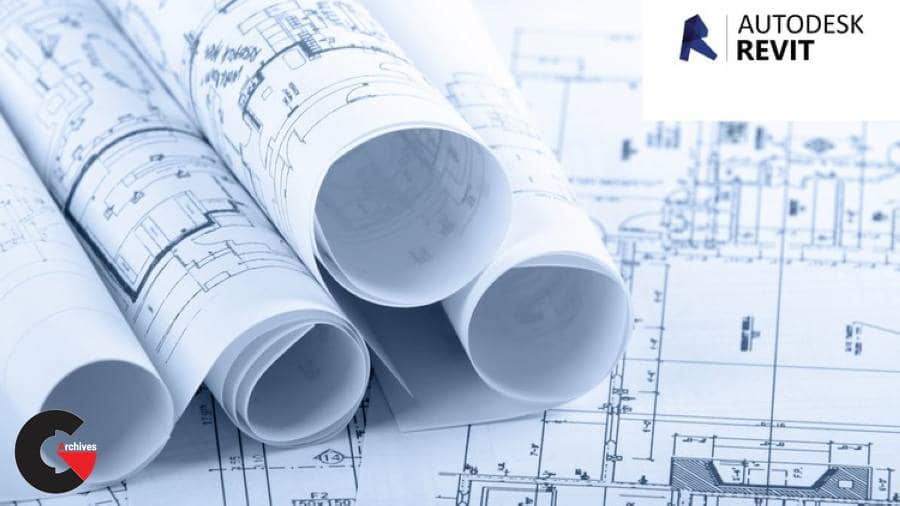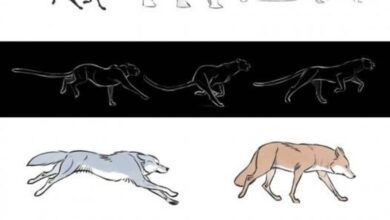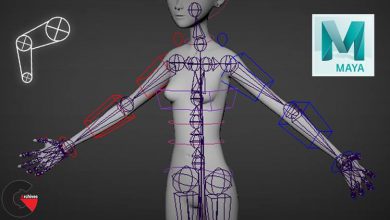Revit Architecture II Course – Complete Intermediate Training
 Revit Architecture II Course
Revit Architecture II Course
Revit Architecture II Course – Complete Intermediate Training : This course is also designed for those people interested in advancing their employment opportunities.
Requirements
- Complete Intermediate Training: Beginners / Previous experience in Revit Architecture is necessary.
- PDF files are available in every Lesson, allowing you to follow along with course instructions.
- PDF Files have detail course instruction steps, it is recommended to read all files for Revit Architecture II Course.
- This Course Contains 12 separate Lessons covering basic to advanced concepts in the latest versions of the
- worlds most popular and versatile BIM Software.
- We recommend to complete all 3 Revit Courses to achieve level of “Revit Architecture Certificate”
This Complete Intermediate Training course will lead the user to Master intermediate level techniques and create a variety of detailed building projects with the world’s leading Building Information Modeling software, Revit Architecture.
Revit Architecture II Course- Covers intermediate topics such as advanced annotation methods, door and window schedules and basic site modelling tools (including topographical surfaces, basic structural elements, camera and perspective view creation, rendering, lights and materials)
Assignment 1 – The first assignment covers all material in the first 4 lessons
Assignment 2 – The second assignment covers all material from lesson 5 to lesson 8.
Assignment 3 – The third assignment covers all from lesson 9 to lesson 12.
Upon successful completion of this Revit course, the students will have reliably demonstrated the ability to:
- Create a full residential sheet set in electronic format.
- Create Component Families in the Family Editor
- Create and modify mass families in the Conceptual Design environment.
- Apply surface division and rationalization techniques to conceptual models.
- Develop building models from conceptual masses.
What Is BIM?
- Unlike CAD Software, which uses software tools to generate digital 2D and/or 3D drawings, BIM facilitates a new way of working: creating designs with intelligent objects. Regardless of how many times the design changes—or who changes it—the data remains consistent, coordinated, and more accurate across all stakeholders. Cross-functional project teams in the building and infrastructure industries use these model-based designs as the basis for new, more efficient collaborative workflows that give all stakeholders a clearer vision of the project and increase their ability to make more informed decisions faster.
- With BIM, the model is actually a complex database and the room is a database element that contains both geometric information and nongraphic data. Drawings, views, schedules, and so on are ―live views of the underlying building database. If designers change a model element, the BIM software automatically coordinates the change in all views that display that element—including 2D views, such as drawings, and informational views, such as schedules—because they are all views of the same underlying information.
Mission
Webelocity Designs, is an integrated practice of architecture, engineering, designers and construction professionals personally invested in delivering creative and practical built environments that enrich communities.
Who this course is for :
- Complete Intermediate Training.
- This great course is for the students who wants to become Revit Architecture Experts.
- Autodesk Software Users that wants to gain knowledge and skills in Revit Interface.
- A chief Revit Architecture Certificate Level.
- We recommend to complete all 3 Revit Courses to achieve same level of the “Revit Architecture Certificate”
What you’ll learn
- This Intermediate course will lead the user to Master intermediate level techniques and create a variety of detailed building projects with the world’s leading Building Information Modeling software, Revit Architecture.
- Covers intermediate topics such as advanced annotation methods, door and window schedules and basic site modelling tools (including topographical surfaces, basic structural elements, camera and perspective view creation, rendering, lights and materials)
- You will get greater insight into the project at any point in its lifecycle, BIM helps you to improve accuracy, efficiency, and productivity, resulting in time and cost savings
- Learn how to work within the BIM process to effectively create and document a full range of building types (including residential buildings, small commercial buildings and multi-storey towers with custom curtain walls)
- Upon successful completion of this course, the students will have reliably demonstrated the ability to: Create a full residential sheet set in electronic format. Create Component Families in the Family Editor Create and modify mass families in the Conceptual Design environment. Apply surface division and rationalization techniques to conceptual models. Develop building models from conceptual masses.
- You will obtain significant value-added benefits like faster project approvals, more predictable outcomes, sustainable design and analysis services, and improved collaboration and information sharing for integrated project delivery strategies
- Project creation, navigation and display concepts, designing with components, working with laves, creating and editing walls, adding doors and windows, creating floor and roof objects, working with view properties, instance and type parameters, loading and modifying family components, adding dimensions and annotations, adding and modifying drawing sheets, and plotting procedures.
- Engineers can increase coordination with architects and other engineering disciplines, improving the reliability of their designs.
- Contractors can make sure that construct-ability issues are flagged early on when changes are less expensive to make.
- Architects can produce more accurate designs with fewer errors, less waste, and closer alignment to the owner’s vision.
- Also learn how to create custom content within the Revit family editor, create conceptual massing studies, use structural tools and generate photo-realistic renderings of building projects.
- Ultimately, YOU will be able to use the models far into the future as the basis of a comprehensive facilities and asset management program
lB6MwSwNNIYYHz66UqInBRH/video/14946
Direct download links 12.3 GB :
Direct download link reserved for subscribers only This VIP
Dear user to download files, please subscribe to the VIP member
- To activate your special membership site, just go to this link and register and activate your own membership . >>>register and activate<<<
- You can subscribe to this link and take advantage of the many benefits of membership.
- Direct downloads links
- No ads No waiting
- Download without any limitation ، all content in website
CGArchives Is The Best
Review
Review
Review this tutorial
 Revit Architecture II Course
Revit Architecture II Course 




